Gubbio, Italy is very close to my heart – a place I have visited over a dozen times. My maternal grandfather is from Gubbio, and I still have a few relatives living here, so if I am ever in Italy I usually try to make a stop to say hi to the family and to eat some amazing Umbrian cuisine that my aunt is cooking up! I was recently there on a family trip to Umbria where I wrote all about traveling to Italy with a baby. Here are 5 things to do when you visit Gubbio, Italy, but first some background:
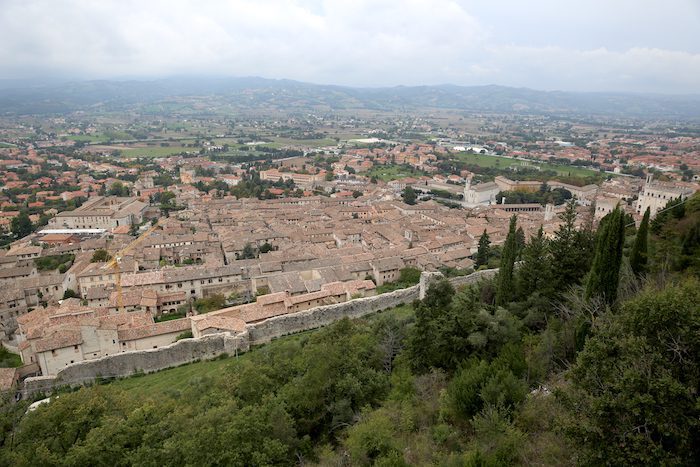
Gubbio is an ancient city dating back to the Etruscan period that become world famous for the discovery of the Eugubine Tables in 1444. They are a set of bronze tablets that together make up the largest surviving text in ancient Umbrian.
In the 2nd century BC, the Romans took control of the city and built the second-largest surviving Roman theatre in the world, which can still be seen today.

The height of Umbria’s power came in the Middle Ages when Gubbio sent 1,000 knights to fight in the First Crusade. The town is also one of the best preserved medieval towns in Italy with many houses dating back to the 14th and 15th centuries. The medieval core has very dark grey stone buildings, narrow streets and Gothic architecture that gives it lots of charm and makes it great for photos.
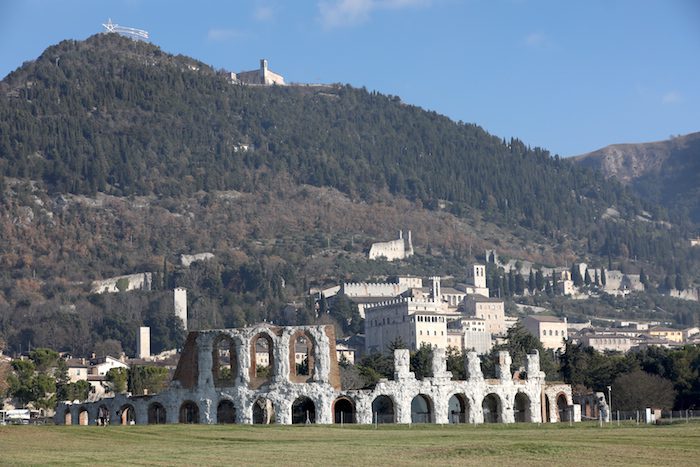
The Roman Theatre of Gubbio is its most visited attraction. Roman theatre was built during the reign of Emperor Augustus. During that time, it was the second-largest in the Roman Empire and was the earliest Roman theatre built entirely upon two-story hollow substructures.
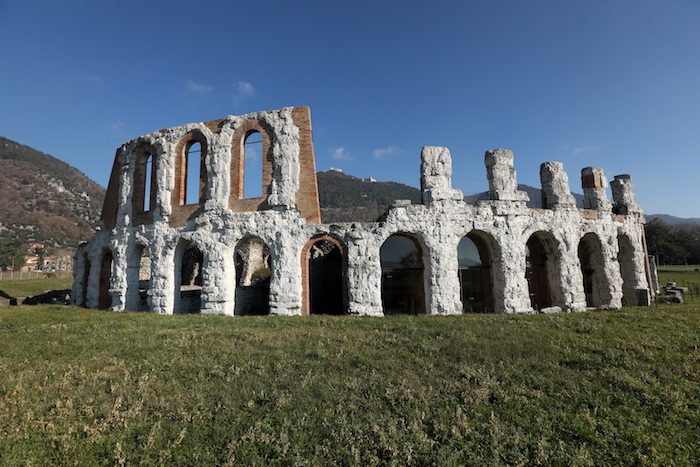
In case you’re wondering, the difference between a theatre and amphitheatre is the shape. Theatres are semi-circular, while amphitheatres are round. Hence, the Coliseum in Rome is an example of an amphitheatre.

The Roman Theatre of Gubbio suffered a lot during a sack by the Goths after the fall of the Roman Empire, but remains well preserved in an open field. Admission is free to this ancient ruins.

The Palazzo dei Consoli is one of the most iconic medieval buildings in Gubbio, dating back to 1332 when it was built by Angelo da Orvieto. The palace is located directly on the Piazza Grande, the main square in Gubbio. From here, you’ll enjoy beautiful views over the medieval town and some of the distant Umbrian countryside. A visit to the Piazza is a definite must of all the 5 things to do in Gubbio and in nearby town.

The Palazzo dei Consoli is home to the Civic Museum containing a number of archaeological finds from the area and from the Roman Theatre. You can see the first public hydraulic system that fed the fountain in the center of the building and a slightly creepy iron cage that was once used for humiliating robbers and criminals.

The real highlight are the Eugubine Tablets, the seven bronze tablets from the 3rd century. Admission to the museum is €5.

On top of Mount Ingino is the Roman Catholic Basilica of Sant’Ubaldo, a gubbio cathedral, which was built in the early 1500s. Its name comes from Saint Ubaldo, the patron saint of Gubbio who lived in the 12th century. St. Ubaldo’s sarcophagus is kept at the top of the Basilica’s main altar on a marble plinth, surmounted by a glass case.

The church is also home to a number of artworks including Madonna and Child by Salvio Salvini and Visitation by Pietro Paolo Tamburini. It is the finishing point for the celebration of Saint Ubaldo Day on May 15th each year.
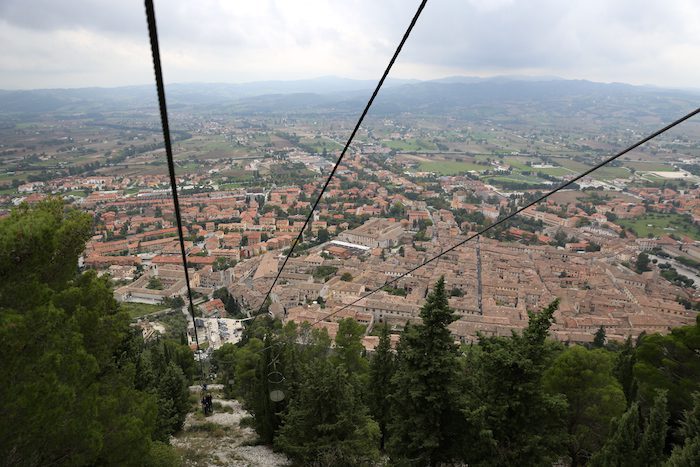
The best way to get to the Basilica is by taking a one-person funicular or Funivia Colle Eletto. This is no ordinary funicular or cable car, as it is open air and can only in fit two people at a time while standing up. It takes around 6 minutes to get to the top of Mount Ingino. On the way up you can see all of Gubbio and its ancient Roman city walls.

The Festa dei Ceri, also known as Saint Ubaldo Day, is held annually on May 15th. This is the largest and most important festival in Umbria, a tradition dating back over 800 years! The festival honors the life of Bishop Ubaldo Baldassini who was canonized as the protector of Gubbio. May 15th was chosen because it is the eve of his death anniversary.

The Race of the Saints starts at the Piazza Grande at around 11:45 am where over 50,000 people gather to start the festival. The race features three tall candles each with a small statue of a saint on top: Saint Ubaldo, Saint Antonio and Saint George. It takes the strength of 10 men to carry these 400 kg candles!
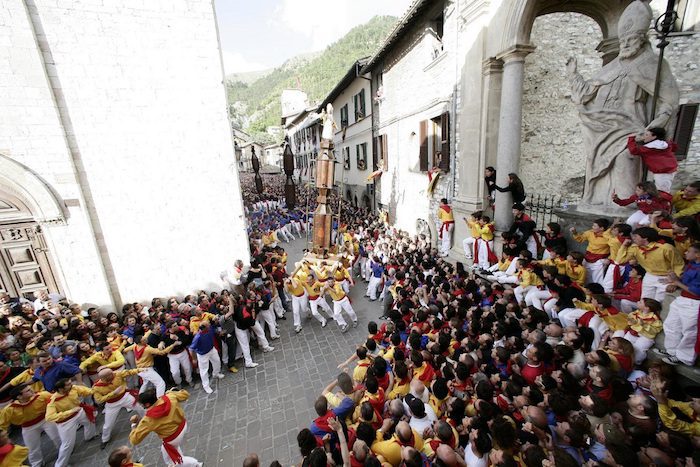
The most intense part of the race is carrying these enormous candles for 4 km up the slopes of Mount Ingino at around 6 pm. The race is not a true race (Saint Ubaldo’s candle alwats wins). The race finishes once they arrive at the Basilica di Sant’Ubaldo. Thousands of people then enter the church and start singing.

I have participated in the festival four times in my life, thanks to my uncle who got me access. But traditionally only Gubbinos can carry the candles and are selected before the festival. Also, a fun fact is that you won’t find any water being served on the streets of Gubbio that day, only wine is allowed!
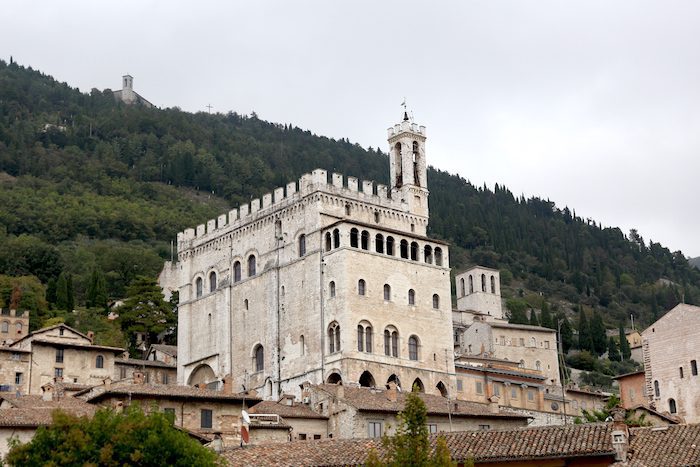
If you didn’t already know, Umbria is the heart of Italy’s truffle industry, producing the largest quantities of black truffles in country. Gubbio happens to be known for their superb quality white truffles. Truffles are an intricate part of Umbrian cuisine and truffle hunting is something that many residents do on the weekends with their truffle-hunting hounds.
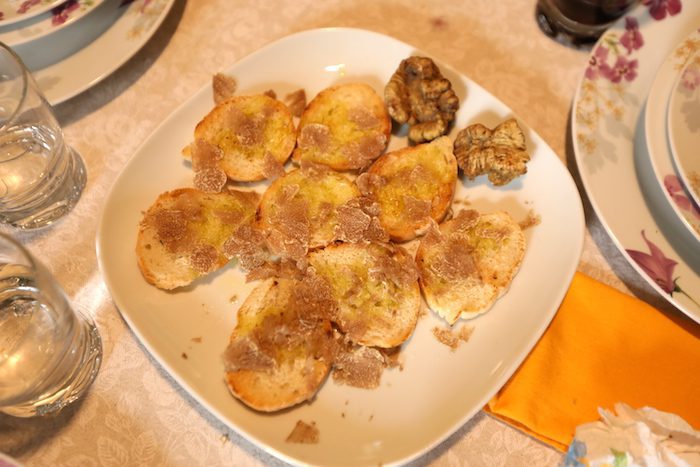
My uncle Aldo and his wife Antonietta always prepare a feast when I come. Bruschetta, pasta, grilled meats, salads, soups, stews – you name it, she can make it. And there is always a delicious hint of truffle in her dishes.
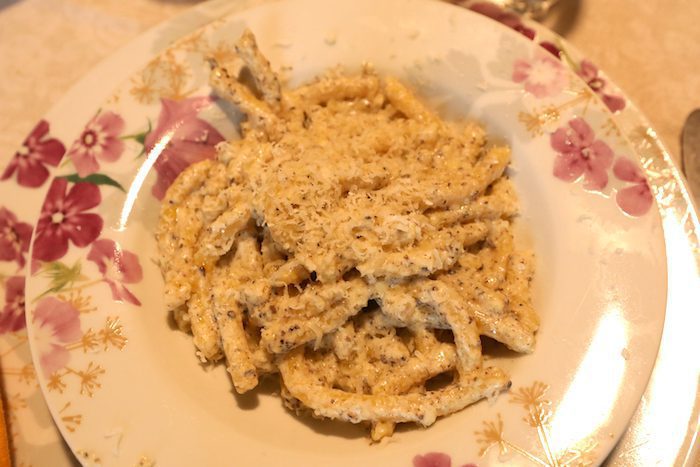
Cooking with truffle is very typical for Gubbio. Even in the best restaurants in town such as Deruta, you will find truffle in almost in every dish.

If you want to get some truffle-infused products to take back home (which will also be a lot cheaper since you’re buying them from the source) there are several small shops in town that sell truffle oil, truffle paste, truffle cheese, and of course whole black and white truffles.
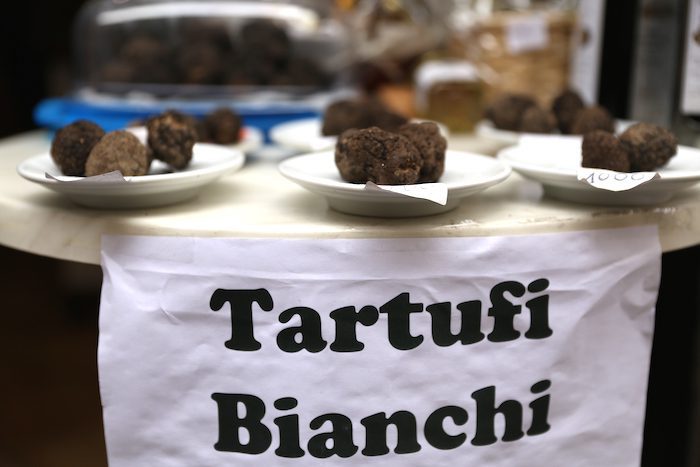
Prices for a small truffle usually start at 10 euro for black truffles and go up from there. In case you’re wondering, Gubbio hosts a white truffles fair every year in late October.
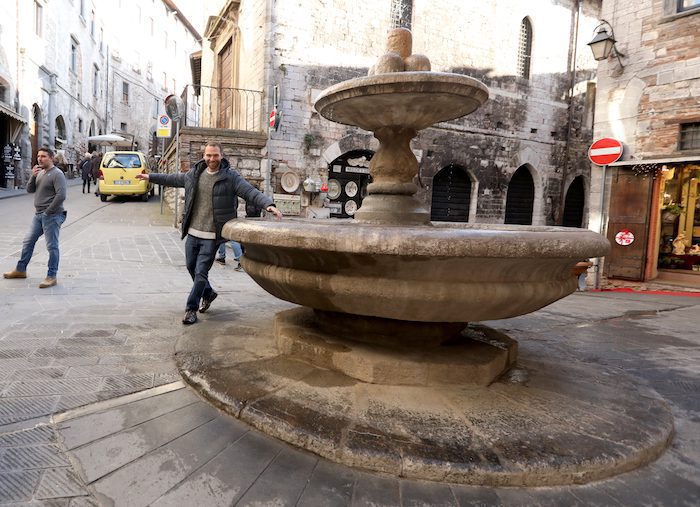
This 16th-century fountain is located directly on Via dei Consoli on the way uphill towards the Piazza Grande. The tradition states that you can gain a license as a ‘madman of Gubbio’ by running around the fountain three times and then being baptized by its waters – but you need a local to perform the ritual! You will then receive a certificate saying how you gained your lunacy along with an honorary citizenship.

While this might sound a little mad, it is believed that the root of the ritual was connected to the strange rock formations around the town and the toxic iridium that contaminated the waters. Most people just walk around the fountain three times to guarantee their return to Gubbio.
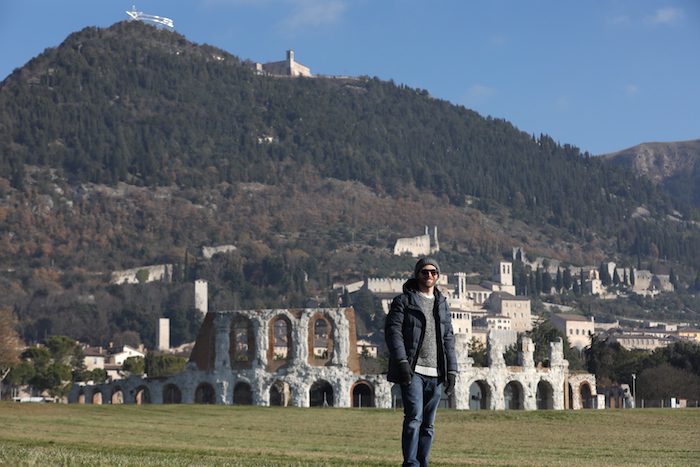
Gubbio is a charming place with plenty of history, amazing food and super friendly locals. It is regarded as one of the most beautiful medieval towns in Umbria and is a must-visit if you find yourself in the region.
What did you think of these 5 things to do in Gubbio, Italy? Leave a question or comment below!
Counter
101 Countries • 1432 Cities
Deborah Wallace says:
I loved this. Thank you. I will be staying at Castello di Baccaresca.
Lucy Natili says:
Hi David…nice to see your blog..was very infomative- the best actually! I was wondering if any of your relatives would be interested in a cooking class private got myself and friend? We are going to be there May 16 2018. Please let me know!